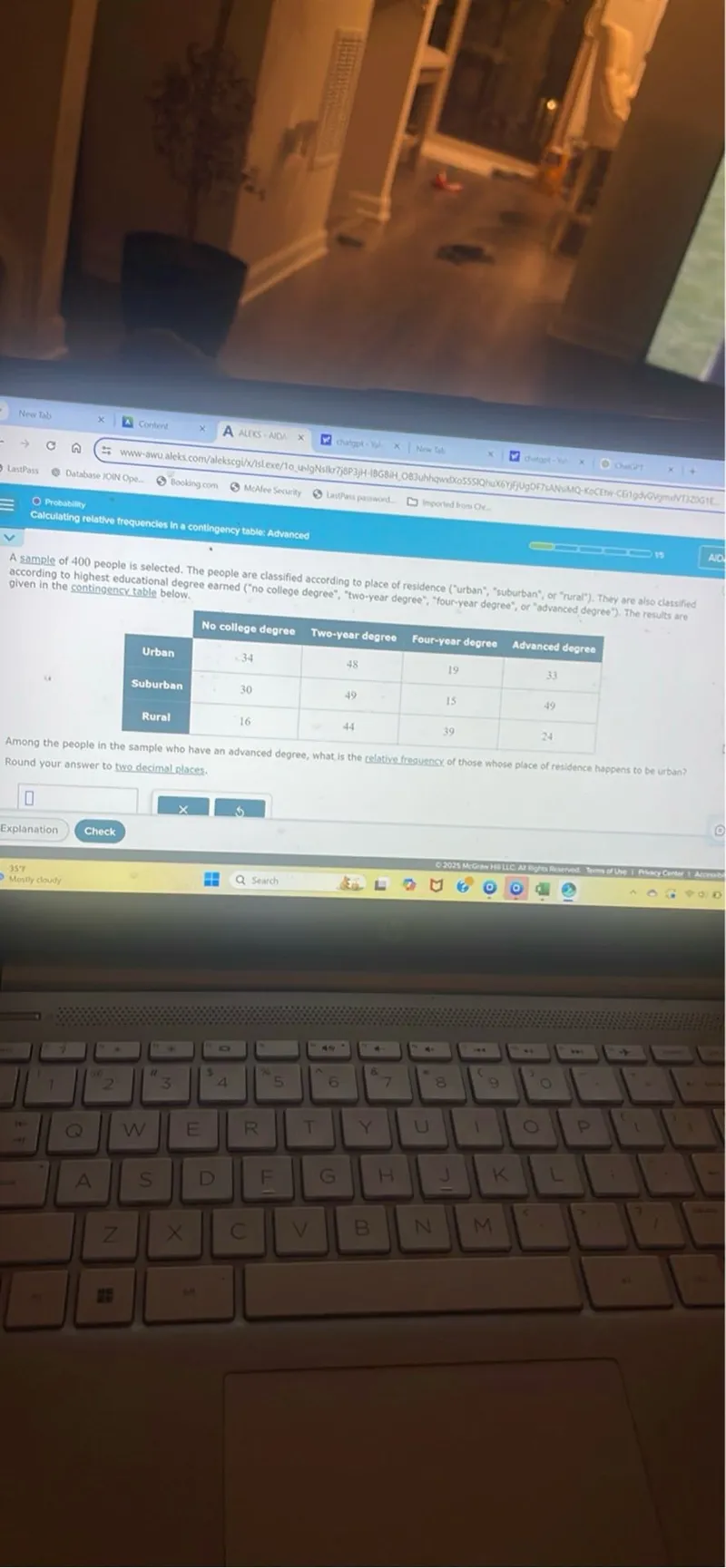Questions: A sample of 400 people is classified according to highest educational degree earned ("no college degree", "Two-year degree", "Four-year degree", "Advanced degree") and according to place of residence ("urban", "Suburban", or "rural"). They are also classified and given in the contingency table below. No college degree Two-year degree Four-year degree Advanced degree Urban 34 48 19 33 Suburban 30 49 15 49 Rural 16 44 39 24 Among the people in the sample who have an advanced degree, what is the relative frequency of those whose place of residence happens to be urban? Round your answer to two decimal places.

Transcript text: A sample of 400 people is classified according to highest educational degree earned ("no college degree", "Two-year degree", "Four-year degree", "Advanced degree") and according to place of residence ("urban", "Suburban", or "rural"). They are also classified and given in the contingency table below.
\begin{tabular}{|c|c|c|c|c|}
\cline { 2 - 5 } \multicolumn{1}{c|}{} & No college degree & Two-year degree & Four-year degree & Advanced degree \\
\hline Urban & 34 & 48 & 19 & 33 \\
\hline Suburban & 30 & 49 & 15 & 49 \\
\hline Rural & 16 & 44 & 39 & 24 \\
\hline
\end{tabular}
Among the people in the sample who have an advanced degree, what is the relative frequency of those whose place of residence happens to be urban? Round your answer to two decimal places.





